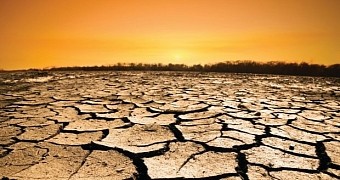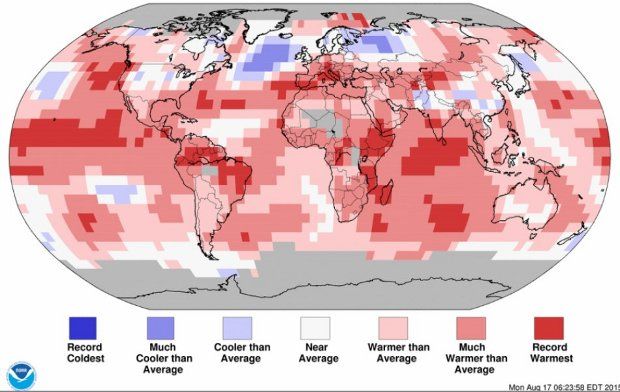No reason to fret if you've been sweating a bit more than usual this past July. There's nothing wrong with you or your sweat glands, it's just that July 1 to July 31 this year turned out to be the absolute hottest month on record.
The global average temperature for both land and ocean surfaces exceeded the average for the entire 20th century by 1.46 degrees Fahrenheit (0.81 degrees Celsius), NOAA researchers say. Besides, it surpassed the previous record set in July of 1998 by 0.14 degrees Fahrenheit (0.08 degrees Celsius).
Not to prolong the suspense, this year's July registered a global average temperature of 61.86 degrees Fahrenheit (16.61 degrees Celsius), the highest ever documented since record keeping began in 1880.
Land and ocean surfaces were especially hot
The average land surface temperature documented across the planet this past July was 1.73 degrees Fahrenheit (0.96 degrees Celsius) above the 20th century average and the 6th highest so far reported.
As for the average ocean surface temperature, it too exceeded the average for the 20th century, albeit only by 1.35 degrees Fahrenheit (0.75 degrees Celsius).
“This was the highest temperature for any month in the 1880-2015 record, surpassing the previous record set in July 2014 by 0.13 degrees Fahrenheit (0.07 degrees Celsius),” NOAA scientists say.
Apparently, this especially hot ocean surface temperature was the result of record warmth documented across large portions of the Pacific and the Indian Oceans.
What with these impressive temperatures, it should not come as a surprise that the first half of this year is now too the hottest on record, with the average temperature for the January - July period exceeding the 20th century average by 1.53 degrees Fahrenheit (0.85 degrees Celsius).
The Arctic's sea ice coverage also took a hit
Satellite data shows that, this July, the Arctic's average sea ice coverage was approximately 350,000 square miles (nearly 910,000 square kilometers) below the average documented between the years 1981 to 2010. So, yes, the Arctic really is melting.
In turn, the Antarctic appears to be getting bigger, with this July's sea ice extent some 240,000 square miles (620,000 square kilometers) above the 1981 to 2010 average. Sadly, this does not mean global warming is not happening.
Au contraire, it was in 2012 that NASA showed that the reason the Antarctic seems to be expanding is because of the thinning of the ozone layer above this part of the world. Ozone absorbs solar energy and so having less of it around means lower temperatures.
Besides, the warming of temperate latitudes is affecting the dynamics of circumpolar winds. In turn, this translates into a new pattern of ice formation and ice loss in the Antarctic.

 14 DAY TRIAL //
14 DAY TRIAL // 

